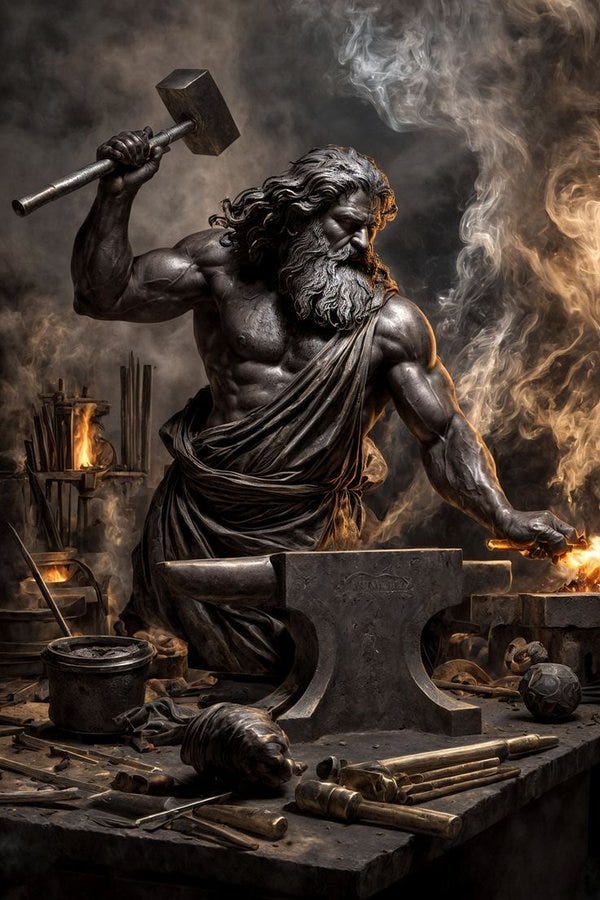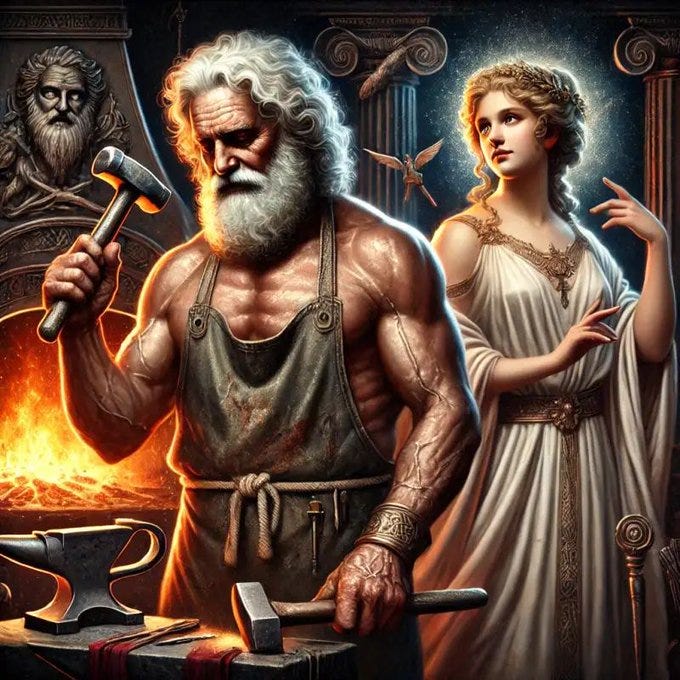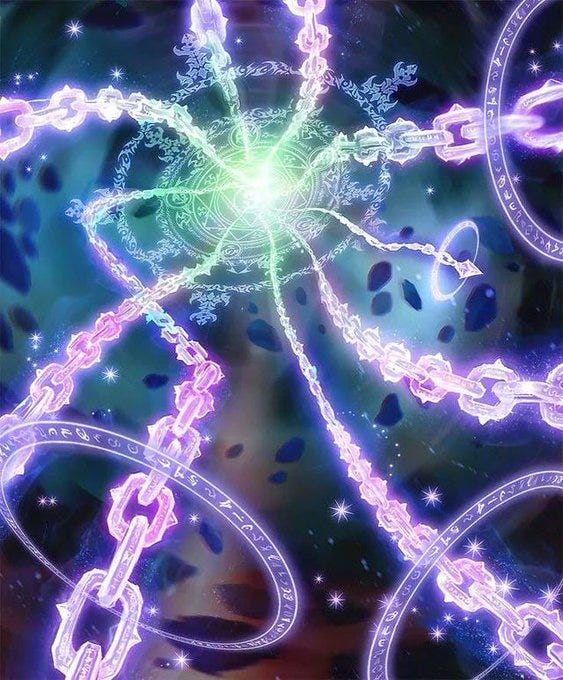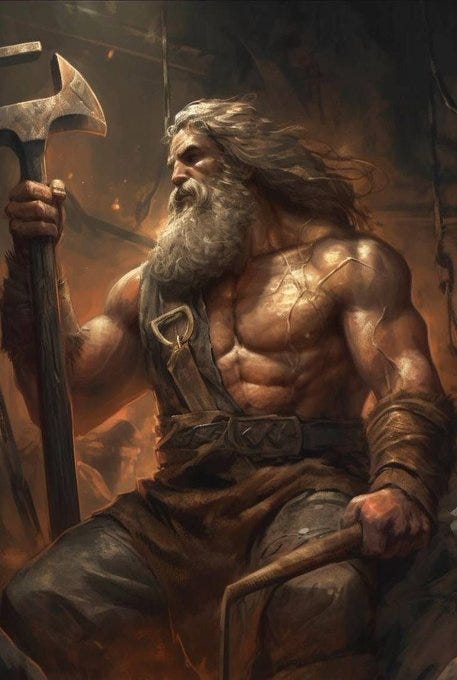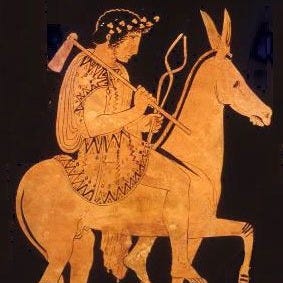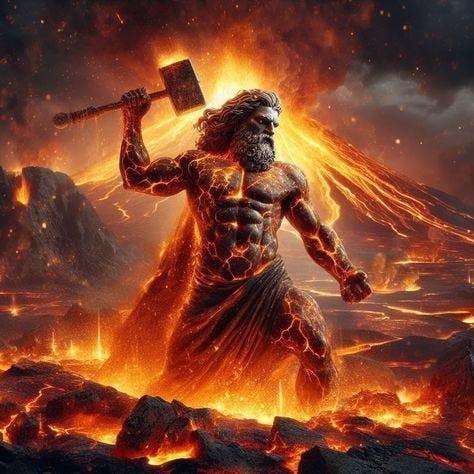The Greatest Revenge Story of All Time
🎥 Before we begin —
If you enjoy uncovering the hidden symbolism and human drama behind ancient myths, subscribe to the Classical Aegis YouTube channel.
It’s a free way to support my work!
The Fall of the Forgotten God
Hephaestus entered the world unwanted.
Born with a deformity, he was hurled from Mount Olympus by his mother, Hera, queen of the gods — ashamed of his imperfect form.
He fell for an entire day before striking the earth on the island of Lemnos.
The impact left him permanently lame.
And yet, it was from this violent rejection that his divine genius would be ignited.
The Smith of Lemnos
The Sintians of Lemnos, a humble people of the Aegean, found and raised the injured child.
Among them, Hephaestus discovered his purpose: fire and creation
Working the forge, he mastered metallurgy, shaping bronze, silver, and gold as easily as others shaped clay.
Every blow of his hammer transformed pain into power.
By the time he reached maturity, his craftsmanship rivaled the very beauty his mother had once found lacking.
The Golden Throne of Vengeance
But Hephaestus did not forget…
He crafted a throne of unparalleled splendor- gleaming gold, inlaid with jewels, wrought with mechanical perfection.
He sent it to Olympus as a “gift” for his estranged mother.
When Hera sat upon it, the trap sprung.
Invisible chains coiled around her body.
The queen of heaven — the embodiment of divine authority — was bound by the work of the son she had cast aside.
The Gods in Panic
Olympus descended into chaos.
Each god tried to break the throne, but none could understand its mechanisms. The artistry was beyond even divine comprehension.
Only Hephaestus could undo what Hephaestus had made.
Yet when they begged him to return, his answer was cold and unyielding:
“I have no mother.”
It was justice, delivered in the language only a craftsman could speak: creation
Dionysus and the Return of the Smith
The standoff might have lasted forever, had Dionysus not intervened.
The god of wine visited Hephaestus, offering laughter, revelry, and drink.
Once the fire-god was suitably intoxicated, Dionysus mounted him on a donkey and led him back up the sacred mountain — a scene immortalized in countless vase paintings and temple friezes as “The Return of Hephaestus.”
In his softened state, Hephaestus released Hera.
In return, he was welcomed back to Olympus, not as a castaway, but as its greatest artisan.
Forging the Divine Order
From that day forward, Hephaestus’ creations shaped the mythic world:
The throne of Zeus and the scepter of kings
Achilles’ armor, forged in fire and tears
The golden net that ensnared Ares and Aphrodite
The mechanical servants, living statues of metal who aided him in his workshop
Hephaestus became the embodiment of what the Greeks revered most:
techne — the art of skill, the marriage of mind and hand.
The Fire Within the Outcast
Hephaestus’ myth is not simply a revenge story.
It is the alchemical transformation of rejection into creation.
Through his craft, he turned pain into artistry, exile into mastery, and humiliation into immortality.
In a pantheon obsessed with perfection, Hephaestus proved that the imperfect can outshine the beautiful and that the lame god could stand taller than all the rest.
Eternal Lesson
Every artist, inventor, or thinker who’s ever been dismissed for being “different” carries a spark of Hephaestus within them.
So when you face rejection, remember:
It may not be the end of your story.
It might just be the beginning of your masterpiece.


